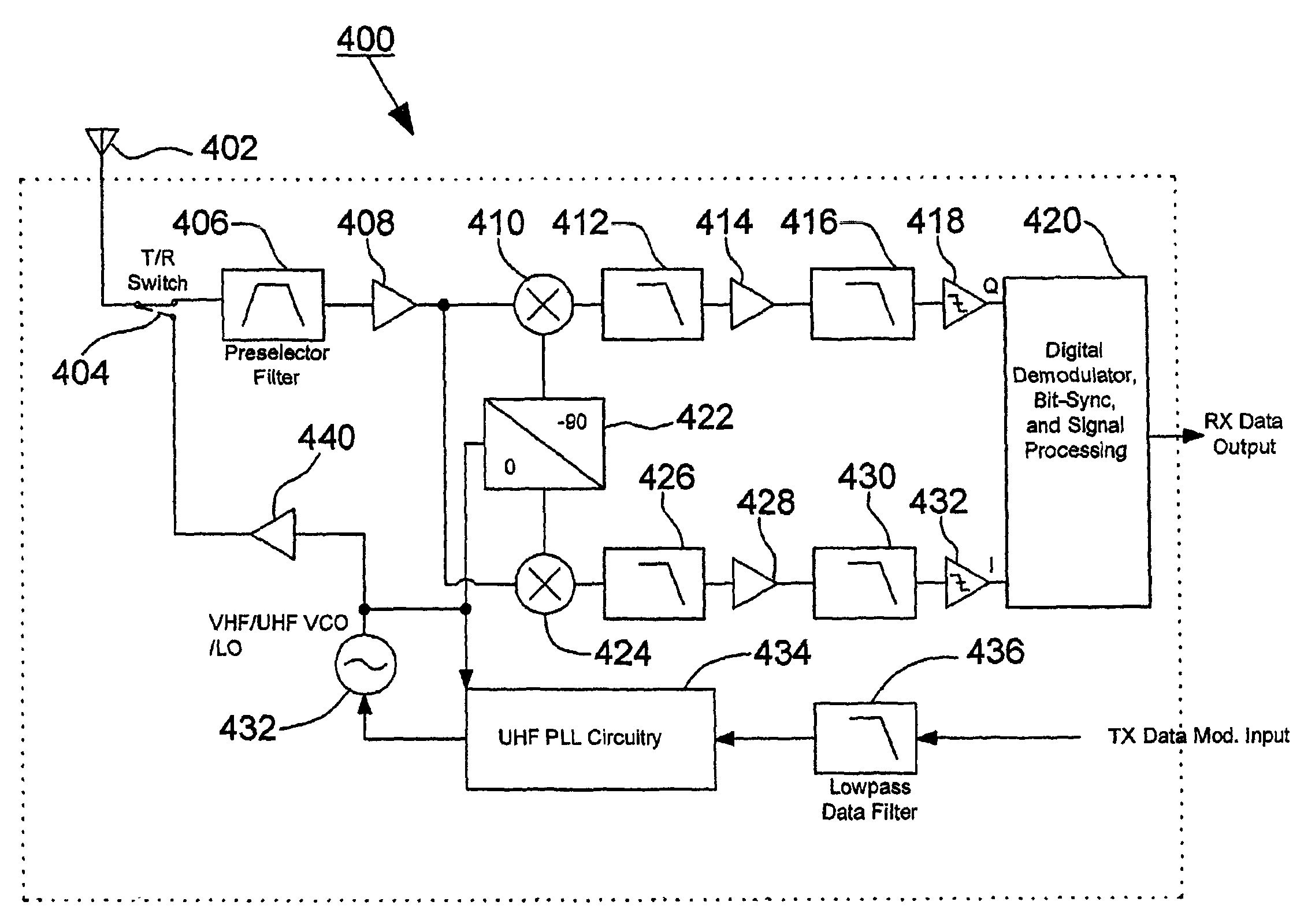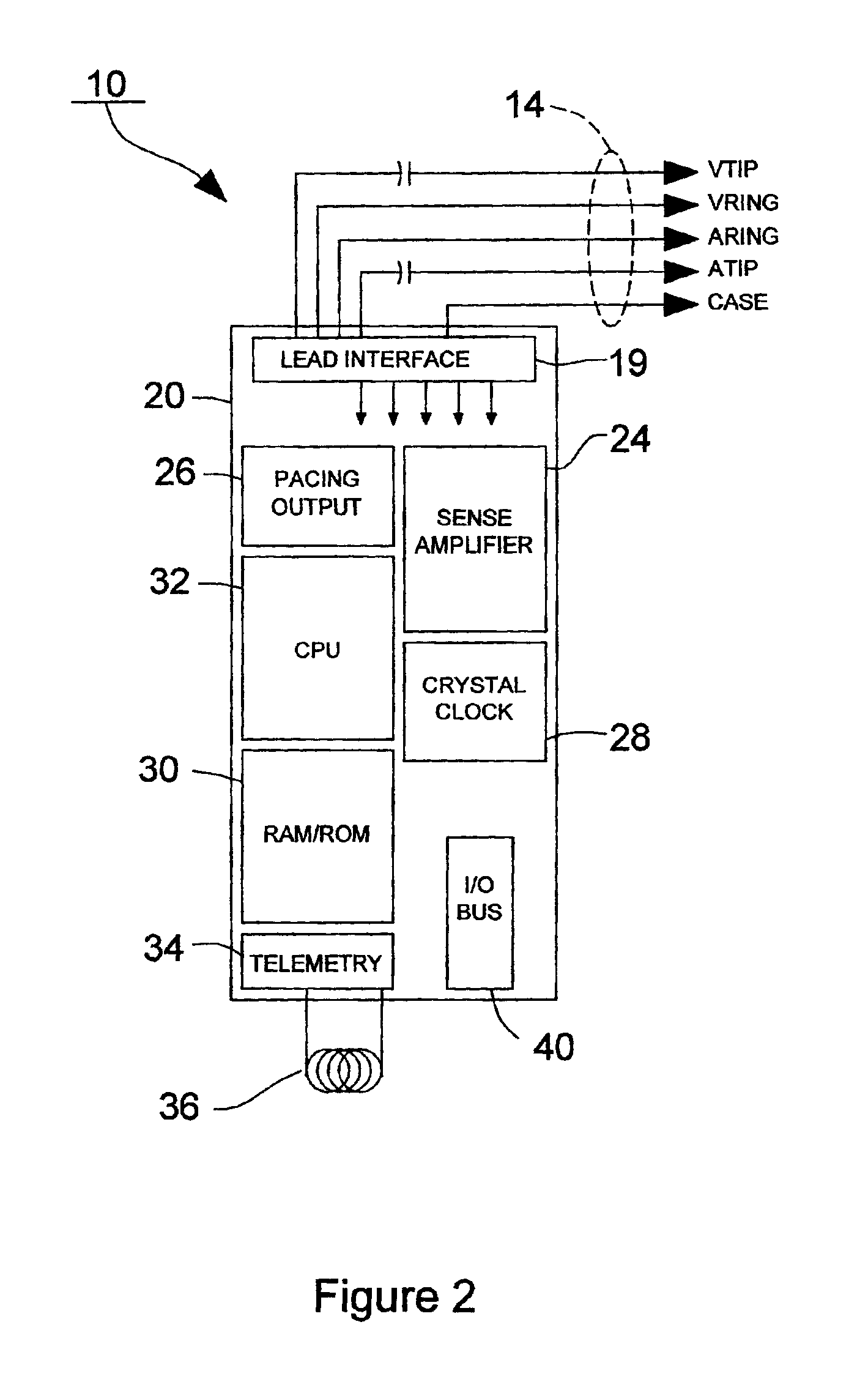Implanted medical device telemetry using integrated thin film bulk acoustic resonator filtering
a technology of bulk acoustic resonator and implantable medical device, which is applied in the field of implantable medical device, can solve the problems of only providing a very low data rate transmission method without interfering with the clinical application of the device, and the state-of-the-art implantable medical device is vastly more sophisticated and complex
- Summary
- Abstract
- Description
- Claims
- Application Information
AI Technical Summary
Problems solved by technology
Method used
Image
Examples
Embodiment Construction
The implantable medical device (IMD) system shown in FIG. 1 includes, for example, an implantable pacemaker 10, which has been implanted in a patient 12. The pacemaker 10 is housed within a hermetically sealed, biologically inert outer canister or housing, which may itself be conductive so as to serve as an indifferent electrode in the pacemaker's pacing / sensing circuit. One or more pacemaker leads, collectively identified with reference numeral 14 in FIG. 1 are electrically coupled to pacemaker 10 in a conventional manner and extend into the patient's heart 16 via a vein 18. Disposed generally near the distal end of leads 14 are one or more exposed conductive electrodes for receiving electrical cardiac signals or delivering electrical pacing stimuli to the heart 16. The leads 14 may be implanted with their distal end situated in either the atrium or ventricle of the heart 16.
Although the present invention is described herein in an embodiment that includes a pacemaker, it may be adv...
PUM
 Login to View More
Login to View More Abstract
Description
Claims
Application Information
 Login to View More
Login to View More - R&D
- Intellectual Property
- Life Sciences
- Materials
- Tech Scout
- Unparalleled Data Quality
- Higher Quality Content
- 60% Fewer Hallucinations
Browse by: Latest US Patents, China's latest patents, Technical Efficacy Thesaurus, Application Domain, Technology Topic, Popular Technical Reports.
© 2025 PatSnap. All rights reserved.Legal|Privacy policy|Modern Slavery Act Transparency Statement|Sitemap|About US| Contact US: help@patsnap.com



